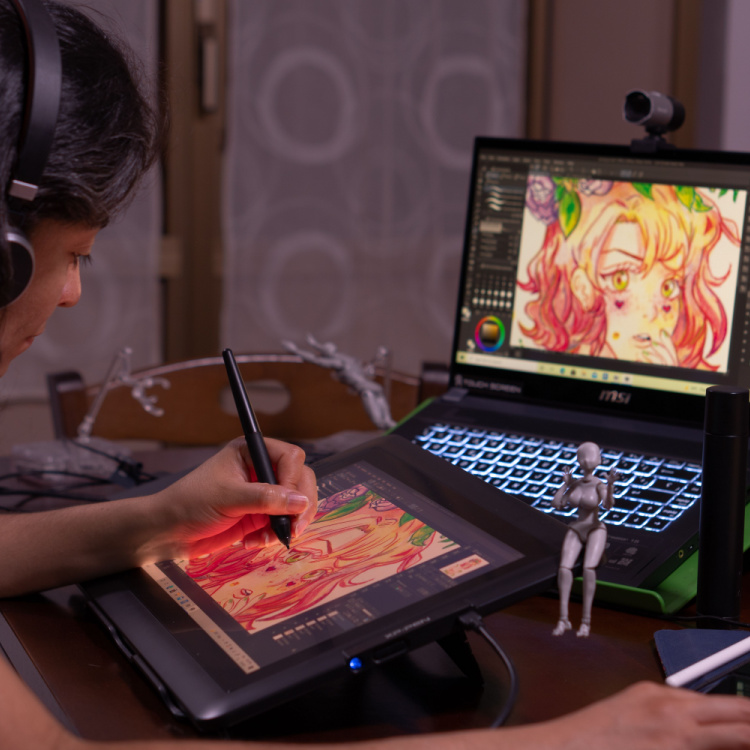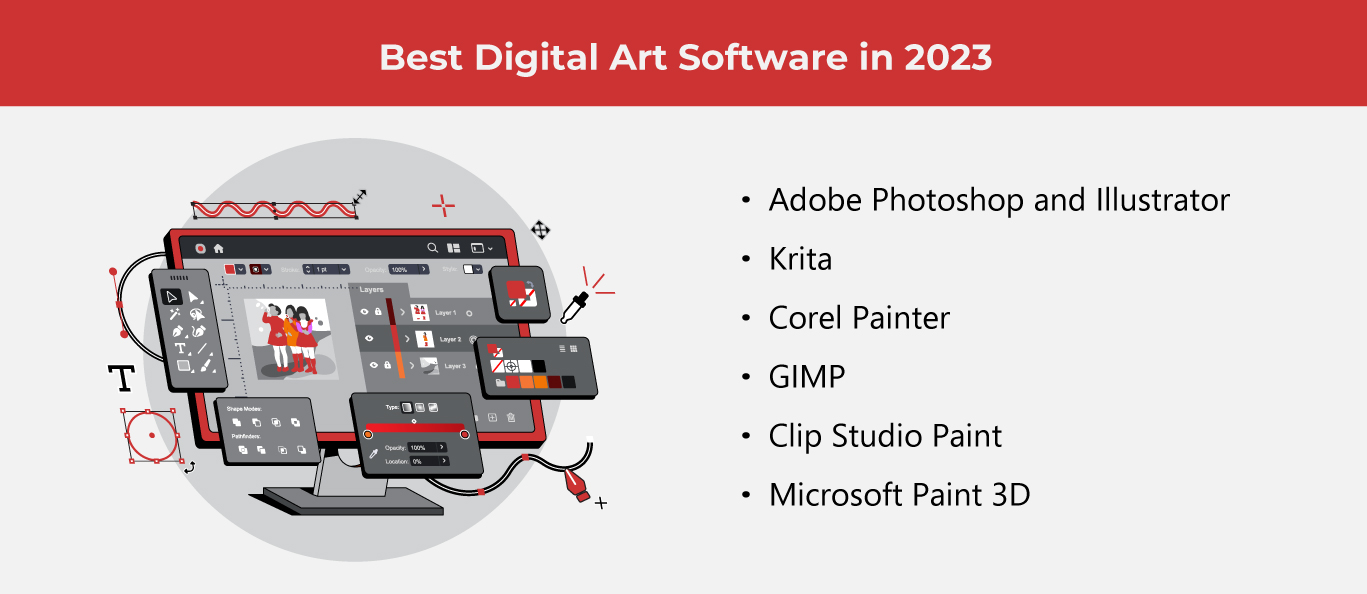10 Things You Need for Digital Art

What do you need to start or continue your journey as a digital artist? Here's a hint: it doesn't involve artificial intelligence (AI). Here's a rundown of the best physical tools and hardware for your digital works of art.
Creating art can be very fulfilling. But now that we're in the cyber age, how we produce art has also changed. If before, the typical tools required canvas or paper, paints, pencils and other art media, today's materials are a bit different—and more high-tech. Now, we have digital art, which utilizes digital technology as a major part of its creative process. Like in traditional art, digital artistic sensibilities and techniques highly vary. However, all digital art pieces use various devices like software programs, tablets and computers.
To help you jumpstart your artistic process, we've created a list of must-haves to help you produce your finest work.
Also read: AI and Creativity: The Algorithm of Art
Top 10 essential tools for creating digital art
Digital tools develop as technology progresses, helping visual artists create and communicate better. With all the choices today, deciding what to include in your arsenal may be overwhelming. The good news is that we've compiled everything you need into a comprehensive list to guide your purchases.
- Drawing tablet
Because an ordinary mouse can't let you draw complex designs because they're quite clunky and not as pressure-sensitive, you need a drawing tablet that enables you to create drawings with precision and in comfort. Drawing tablets allow you to illustrate directly on the screen or send your artwork to your monitor. This offers an easier and more intuitive experience compared to using a mouse.
Before buying a drawing tablet, think about the art you'll create. For instance, digital painting requires good pressure responsiveness and configurable options. Meanwhile, vector illustrations are easier on a tablet with a wide drawing surface. While budget is a huge consideration, check if the tablet works with your computer's operating system.
- Stylus
To draw on the tablet, you need your "pen", which, in this case, is the stylus. Because you can fit the stylus with different tips, you can better control your strokes and pressure, resulting in richer and more detailed artwork. Imagine using a mouse or a trackpad for your intricate paintings and illustrations—you won't enjoy the same comfort and accuracy a stylus offers.
- Drawing software
Because you're now going digital for your art, you need drawing software to get started. If you're taking the professional route, Photoshop is the most recommended, especially for paintings and two-dimensional drawings. But if you're looking for more affordable alternatives, you can try CorelDRAW, Krita and many others. Meanwhile, many artists recommend Clip Studio Paint for classic comic book art. Choose feature-rich software like Autodesk 3ds Max or Maya for intricate three-dimensional art. Whatever you choose, make sure that it fits your preferences and needs.
- Color-precise monitor
Digital art requires accuracy and consistency, especially in color rendering. With a color-accurate monitor, you can create confidence, knowing that your colors are true to life. If you plan to print your work, this physical tool is crucial in editing and soft-proofing, ensuring that your masterpiece meets printing standards and client expectations. Also, a high-quality monitor offers more display options, making long hours of artistic work easy on the eyes.
- Drawing shortcut remote
Improve speed and productivity by using a shortcut remote for drawing digital art. This gives you quick access to tools and functions you often use. You can even create shortcuts for different functions, allowing you to work without interruptions. A remote also helps reduce hand and wrist strain because you don't always have to use the keyboard to retrieve menus. This way, you can easily fine-tune your work, letting you produce quality artwork.
- Font library
A font library is an excellent idea if you're a graphic designer or incorporating letters in your digital art. This gives you a wide range of styles and typefaces, letting you choose the right fonts to supplement your artwork and communicate your message. Unique fonts can highlight your artistic creativity and originality, lending a distinct style and visual appeal to your work. The good news is there are many fonts you can download for free or for a fee.
- Dependable computer
When you start taking on bigger and more complex projects, you need a powerful machine to handle heavy files. If your computer is less than reliable, expect it to freeze, lag or cause the software to crash. With a good computer, you can use multiple applications simultaneously, while boosting your rendering and preview processes. Working on large canvases with various layers required significant random-access memory (RAM) and processing capabilities to maintain efficiency.
- Storage
If your computer's built-in storage isn't enough for your digital masterpieces, then it's time you invest in external hard drives or cloud storage. Either works, depending on your requirements. With an external hard drive, you can easily access files without an internet connection. Because the device is physically with you, you have full control over its privacy and security. Meanwhile, a cloud drive lets you access files with any connected device. It ensures data safety through automatic backup options while allowing collaboration since other users can access your files online.
- Durable keyboard and mouse
A mouse is still necessary for non-drawing tasks and navigation, even if you have a drawing tablet. Also, some artists prefer using a pen tool with a mouse when drawing. A touch-responsive mouse makes your work easier, especially when managing files and selecting tools. A good keyboard also lets you do these things, plus shortcut access, creating and selecting layers, and inputting text and numbers—all essential for a time-efficient workflow.
- Ergonomic chair
Unless you're using a standing desk, you need a comfortable chair while spending long hours at your workstation. Ensure that your chair gives ample back support, which is vital in maintaining a healthy posture. This way, you avoid experiencing back pains and other issues caused by prolonged sitting. A good chair also lets you customize its tilt, seat height and depth, making you comfortable as you focus on your work.

As one of the Top 20 EMS companies in the world, IMI has over 40 years of experience in providing electronics manufacturing and technology solutions.
We are ready to support your business on a global scale.
Our proven technical expertise, worldwide reach, and vast experience in high-growth and emerging markets make us the ideal global manufacturing solutions partner.
Let's work together to build our future today.
Other Blog



